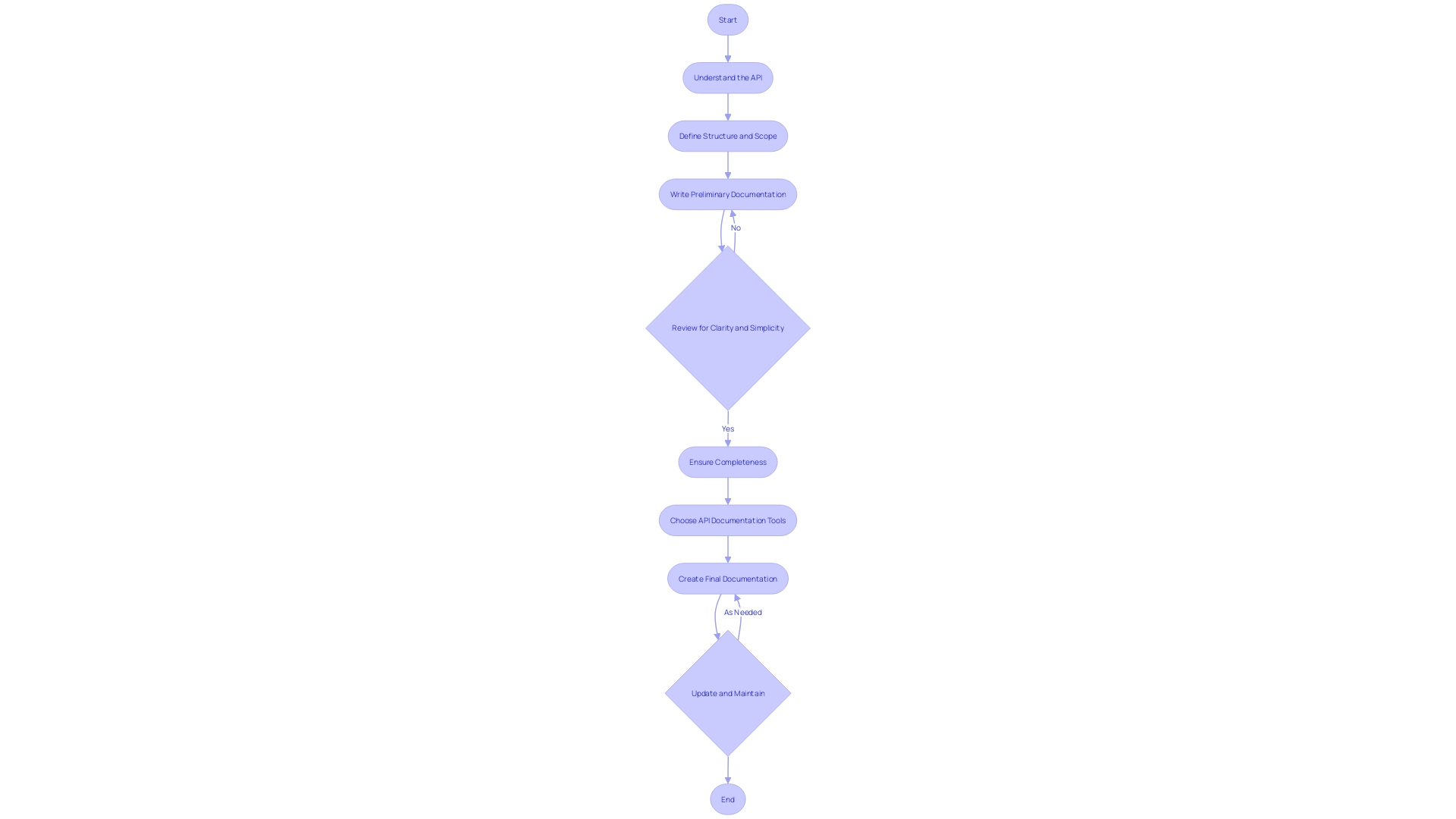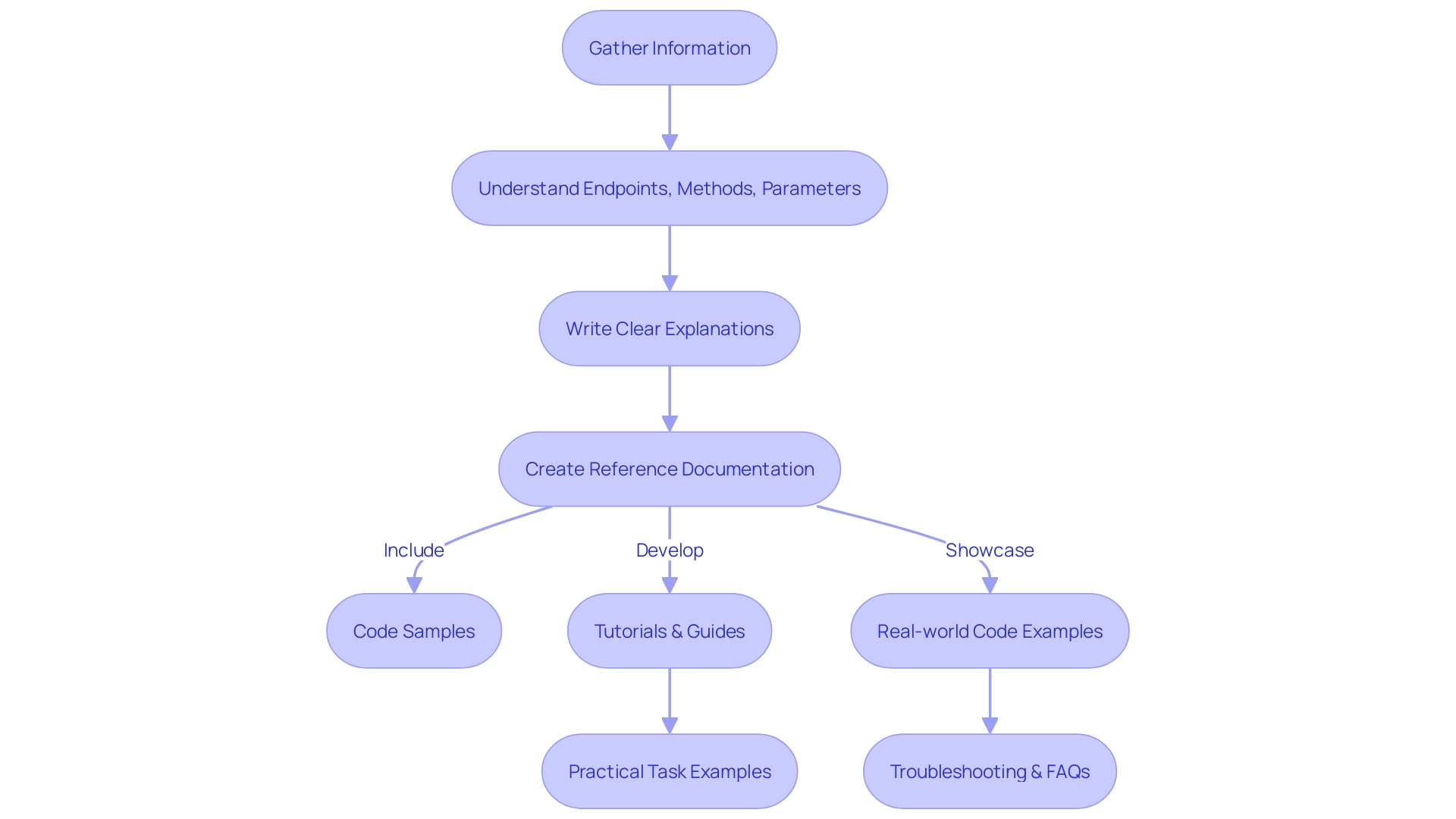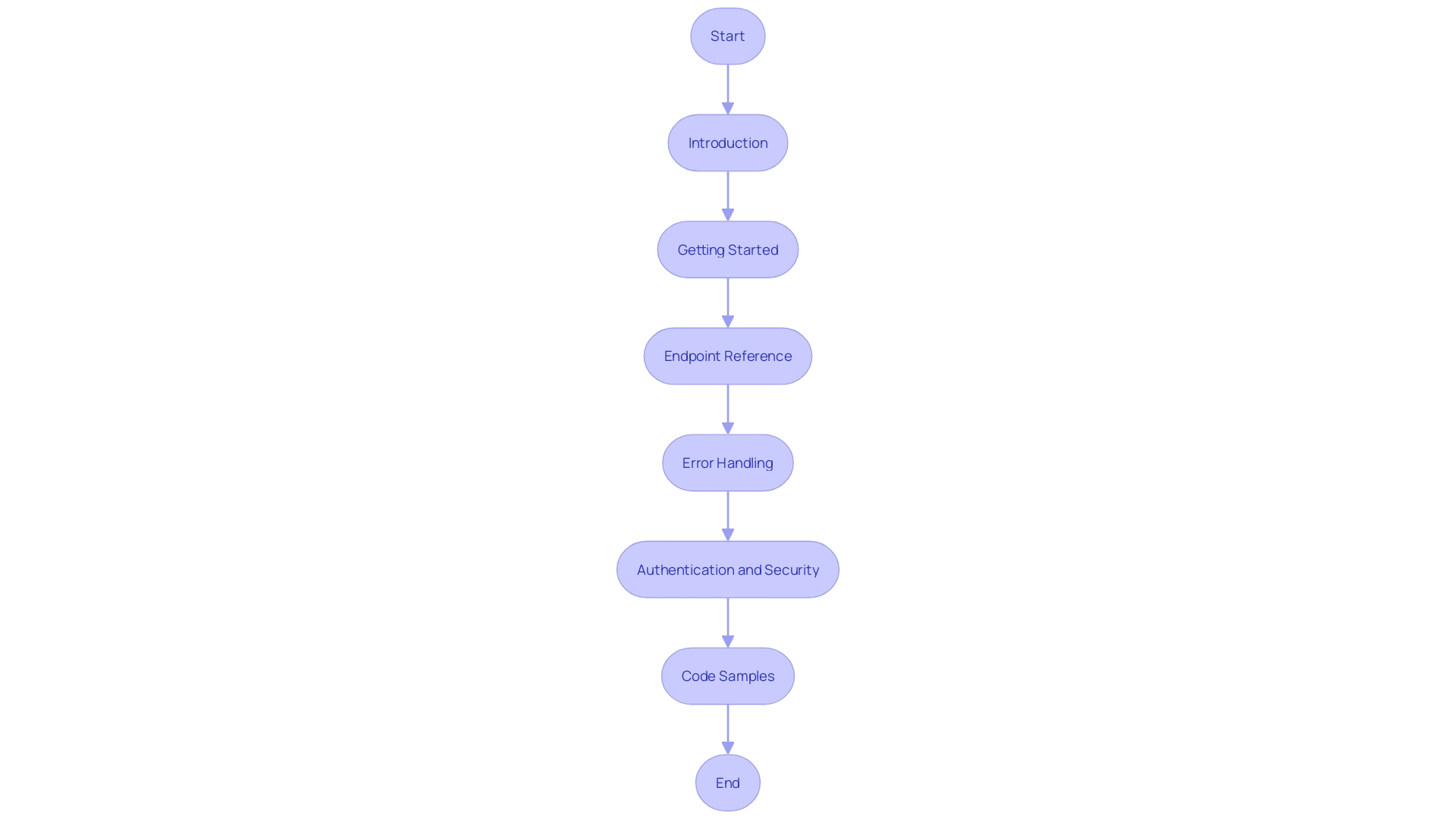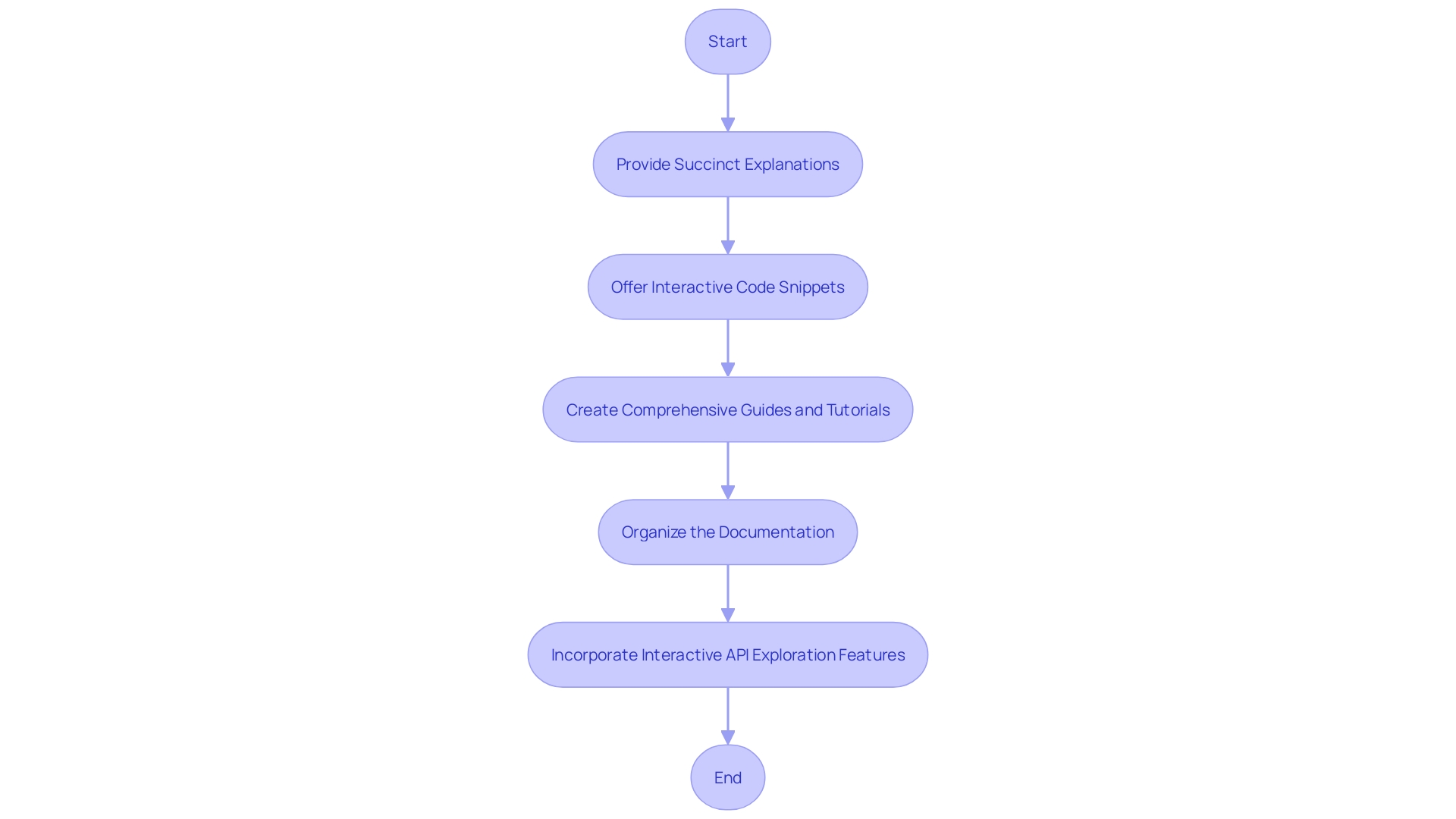Introduction
API documentation is an essential roadmap for developers, offering clarity on how to effectively utilize and implement Application Programming Interfaces (APIs) within their projects. This documentation encapsulates the essence of the API, detailing its functionalities, accessible endpoints, and the structural intricacies of data exchanges.
When constructed with precision, it becomes an invaluable resource for developers, promoting seamless integration and interaction with the API. In this article, we will explore the basics of API documentation, the different types of documentation, key components to include, best practices for creating effective documentation, tools that can aid in the process, common challenges faced, and real-world examples of effective API documentation. By the end of this article, you will have a comprehensive understanding of how to create clear, concise, and user-friendly documentation for APIs.
Understanding the Basics of API Documentation
API documentation is an essential roadmap for developers, offering clarity on how to effectively utilize and implement Application Programming Interfaces (APIs) within their projects. This documentation encapsulates the essence of the API, detailing its functionalities, accessible endpoints, and the structural intricacies of data exchanges.
When constructed with precision, it becomes an invaluable resource for developers, promoting seamless integration and interaction with the API. A stellar API documentation is underpinned by the principles of clarity and simplicity, enabling developers to avoid the pitfalls of confusion and misinterpretation.
It eschews unnecessary jargon or, when technical terms are unavoidable, pairs them with lucid explanations. Furthermore, comprehensive coverage is paramount, ensuring that every facet of the API—from endpoints and methods to parameters and expected responses—is thoroughly elucidated.
In the digital realm, where APIs are the linchpins of modern experiences, their potential is only as potent as the clarity of their accompanying documentation. The advent of specialized API documentation tools has revolutionized the creation and maintenance of such documents, making them more accessible and amenable to updates.
These tools are not merely a convenience; they are a necessity for developers striving to navigate the vast sea of available APIs. The significance of software documentation transcends mere guidance; it is the bedrock of software development. Serving as both a compass and a contract, it delineates the software's design and architecture while setting clear expectations for all stakeholders. Without it, the development process is susceptible to disarray and inefficiency. Process documentation, in particular, chronicles the journey of software development, offering insights into the maintenance and evolution of the software over time.

Types of API Documentation
API documentation is the cornerstone of a developer's ability to understand, implement, and troubleshoot an API. It should be a clear, complete, and straightforward resource, avoiding unnecessary jargon or, when technical terms are unavoidable, providing clear explanations.
This encompasses detailed descriptions of endpoints, methods, and parameters, as well as the possible responses one can expect from the API. Reference documentation is essential, meticulously outlining each endpoint and method with accompanying code samples to illustrate proper usage.
Tutorials and guides offer a practical approach, presenting step-by-step directions for specific tasks, invaluable for those new to the API or grappling with more intricate operations. Furthermore, real-world code examples give developers a tangible grasp of how the API functions within actual applications, offering a template that can be adapted to fit their development needs. As APIs become integral to digital experiences, their documentation must evolve to be not only readable and user-friendly but also easily maintainable and updatable, aiding developers in creating seamless digital platforms.

Key Components of API Documentation
Crafting effective API documentation is essential for enabling developers to understand, implement, and troubleshoot software effectively. Begin with an Introduction that outlines the API's purpose and key features, creating a clear picture of its capabilities.
The Getting Started guide should simplify the initial steps of authentication, request-making, and response handling, allowing developers to quickly start interacting with the API. The Endpoint Reference section is critical, detailing each endpoint's URL, supported methods, request/response formats, and necessary parameters.
This thoroughness ensures developers have the information they need at their fingertips. To manage issues that arise, the Error Handling documentation must clearly explain error codes and messages, offering solutions for common problems.
Security cannot be overlooked, and thus, the Authentication and Security section must outline the supported authentication methods and best practices for secure API integration. Finally, Code Samples in various programming languages demonstrate practical usage, bridging the gap between theory and application. As the backbone of modern digital experiences, APIs require documentation that is not just a formality but a comprehensive knowledge base. With the right documentation tools, API documentation becomes a living document, easy to maintain and update, ensuring it remains a reliable resource for developers.

Best Practices for API Documentation
Crafting exemplary API documentation is an art that marries clarity with utility. Begin by painting a picture of the feature you're documenting, and elucidate the real-world advantages of mastering it. This foundational understanding not only garners interest but also anchors the reader's learning in practicality.
As you sculpt your document, ensure a logical progression that feels like a natural learning curve, moving from the basics to the more complex intricacies. Each sentence should serve a purpose, answering potential reader queries or illustrating the concept with a relatable example. The structure should flow seamlessly, with each section deftly building upon the last, creating a cohesive narrative free of jarring leaps or informational voids.
In the realm of documentation, clarity reigns supreme. Employ plain language and, when technical terms are unavoidable, accompany them with clear definitions. The documentation must be comprehensive, leaving no stone unturned.
This means delving into the nitty-gritty of endpoints, methods, parameters, and responses, ensuring nothing is left to the reader's imagination. A well-documented API is a testament to a developer's craftsmanship, where concise explanations, consistent formatting, and practical code examples lead the way. Regular updates reflect the evolving nature of APIs, keeping developers in the loop and at the forefront of innovation.
Navigation should be intuitive, with a structured table of contents and logical links interconnecting the sections. By including FAQs and a troubleshooting guide, you pre-emptively address common hurdles, smoothing the developer's journey. Embrace feedback as a tool for refinement.
It's a window into the user's experience, offering insights that can sharpen the documentation's effectiveness and relevance. This approach aligns with the Developer Experience Lab's findings, which highlight the importance of enhancing the developer experience to foster sustainable productivity, rather than merely amplifying output. By focusing on the developer's journey through your documentation, you're not just imparting knowledge; you're enhancing their overall experience in the digital landscape.
Tools for API Documentation
In the realm of software development, Application Programming Interfaces (APIs) are indispensable for enabling diverse systems to interconnect and communicate effectively. These APIs need to be accompanied by clear and comprehensive documentation to ensure they are used correctly and to their full potential.
To aid in this essential task, a variety of tools have been developed. Swagger, an open-source tool, stands out by offering a user-friendly environment for designing, constructing, and documenting RESTful APIs.
It simplifies the creation process with features like automated code generation and interactive API exploration. Postman, another highly-regarded tool, streamlines API development and testing while integrating documentation capabilities.
It enables developers to generate detailed documentation from their API interactions seamlessly. For those favoring a minimalist approach, Slate offers a responsive and customizable solution, utilizing Markdown for documentation generation. Lastly, ReadMe provides a robust platform for API documentation, enhancing the user experience with interactive code examples, personalized branding, and tools to foster a community amongst developers. Each of these tools embodies the principles of clarity, simplicity, and completeness - vital components for any effective documentation that serves as a reliable knowledge base and facilitates user and developer understanding, implementation, and troubleshooting.
Common Challenges in API Documentation
API documentation is the linchpin of successful integration and utilization of these critical systems in any digital project. It's imperative to maintain documentation that is both accurate and user-friendly.
Updates should be meticulously tracked and reflected in real-time as API features evolve, ensuring that endpoints, parameters, and functionalities are current. The clarity and simplicity of the language used are vital; it should be devoid of unnecessary jargon or, at least, provide clear explanations, thus bridging the gap between seasoned developers and novices.
Consistency in style, format, and terminology across the entire documentation fosters a seamless understanding. This is especially important when dealing with account-related APIs, where terms like 'Account' can have multifaceted meanings and implications depending on the department or context, as pointed out by Nick Tune in his observations from a Lufthansa project.
Furthermore, the documentation should comprehensively cover all aspects of the API, including endpoints, methods, parameters, and expected responses, to serve as a robust guide for users. Version control is another critical aspect. Clear delineation between different API versions and guidance for transitioning is crucial for developers to manage updates effectively. Lastly, security is paramount; documentation must provide explicit instructions for authentication protocols, data protection, and common security measures to safeguard against vulnerabilities. The overall goal is to create documentation that not only serves as a knowledge base but also as a roadmap, preventing the project from becoming directionless or chaotic.
Real-World Examples of Effective API Documentation
When discussing the implementation of API documentation, Stripe and GitHub stand as prime examples of clarity and user engagement. Stripe's documentation excels by offering succinct explanations for each API endpoint.
Interactive code snippets are available in various programming languages, catering to diverse developer needs. This is complemented by comprehensive guides and tutorials that support developers new to the API, effectively reducing the learning curve.
Similarly, GitHub's API documentation is a testament to thorough organization. It provides an extensive reference section, complete with detailed guides and practical code examples that span a multitude of scenarios.
What sets it apart is the interactive API exploration feature, which empowers developers to execute API calls in real-time, directly within the documentation. This interactive element not only enhances understanding but also provides immediate feedback, which is crucial for an efficient developer experience (DevEx). These examples embody the practice of integrating ProductFeature and Subscription models seamlessly into documentation. For instance, a subscription model can be employed to facilitate recurring purchases, while Product Feature can depict the association between individual features and the products they enhance. By following these methods, documentation can serve not just as a manual but as an interactive platform that offers a sustainable and enriching experience, ultimately contributing to the reduction of developer burnout and the promotion of code quality.

Conclusion
In conclusion, API documentation is essential for developers to effectively implement and utilize APIs in their projects. It provides clarity on functionalities, endpoints, and data exchanges. Constructing precise documentation promotes seamless integration and interaction with the API.
To create effective API documentation, focus on clarity and simplicity. Comprehensive coverage of endpoints, methods, parameters, and responses is crucial. Best practices include painting a practical picture of features, ensuring a logical progression, using plain language with clear definitions, regular updates, intuitive navigation, and addressing common challenges like accuracy and security.
Tools such as Swagger, Postman, Slate, and ReadMe aid in API documentation creation by offering user-friendly environments and interactive features. Real-world examples from Stripe and GitHub showcase effective documentation with succinct explanations, interactive code snippets, comprehensive guides, and interactive API exploration. By following best practices, utilizing tools, addressing challenges, and learning from real-world examples, developers can create concise documentation that enhances the developer experience and promotes efficient utilization of APIs in digital projects.
Start creating your comprehensive API documentation today and enhance your developer experience!
Frequently Asked Questions
What is API documentation?
API documentation is a comprehensive guide that helps developers understand how to effectively utilize and implement Application Programming Interfaces (APIs) in their projects. It details the API's functionalities, available endpoints, and data exchange structures.
Why is API documentation important?
API documentation serves as a roadmap for developers, ensuring seamless integration and interaction with the API. It promotes clarity and reduces confusion, enhancing the overall developer experience.
What are the key components of effective API documentation?
Key components include: Introduction (outlines the API's purpose and features), Getting Started (simplifies initial steps), Endpoint Reference (details each endpoint's URL, methods, request/response formats, and parameters), Error Handling (explains error codes and resolutions), Authentication and Security (covers authentication methods and best practices), and Code Samples (provides practical examples in various programming languages).
What types of API documentation exist?
There are several types of API documentation, including Reference Documentation (detailed descriptions of endpoints with code samples), Tutorials and Guides (step-by-step instructions for specific tasks), and Real-World Code Examples (demonstrates how the API functions within actual applications).
What are some best practices for creating API documentation?
Best practices include using clear and simple language, structuring the documentation logically, including comprehensive details about endpoints and parameters, regularly updating the documentation, and providing intuitive navigation.
What tools can be used for API documentation?
Some popular tools include Swagger (user-friendly open-source tool for designing and documenting RESTful APIs), Postman (streamlines API development with integrated documentation), Slate (customizable solution using Markdown), and ReadMe (enhances user experience with interactive code examples).
What common challenges arise in API documentation?
Common challenges include keeping documentation accurate and up-to-date, using clear language, ensuring consistency in style and terminology, managing version control effectively, and providing explicit instructions for authentication and security measures.
Can you provide examples of effective API documentation?
Examples include Stripe (offers succinct explanations, interactive code snippets, and comprehensive guides) and GitHub (features a well-organized reference section and an interactive API exploration tool).
How can feedback improve API documentation?
Feedback helps identify areas for improvement, enhances clarity, and ensures that the documentation meets user needs, leading to refinements that increase its effectiveness and relevance.
What is the role of API documentation in the software development process?
API documentation serves as both a compass and a contract, guiding developers through the design and architecture of the software. It is essential for maintaining order and efficiency throughout the development process.




